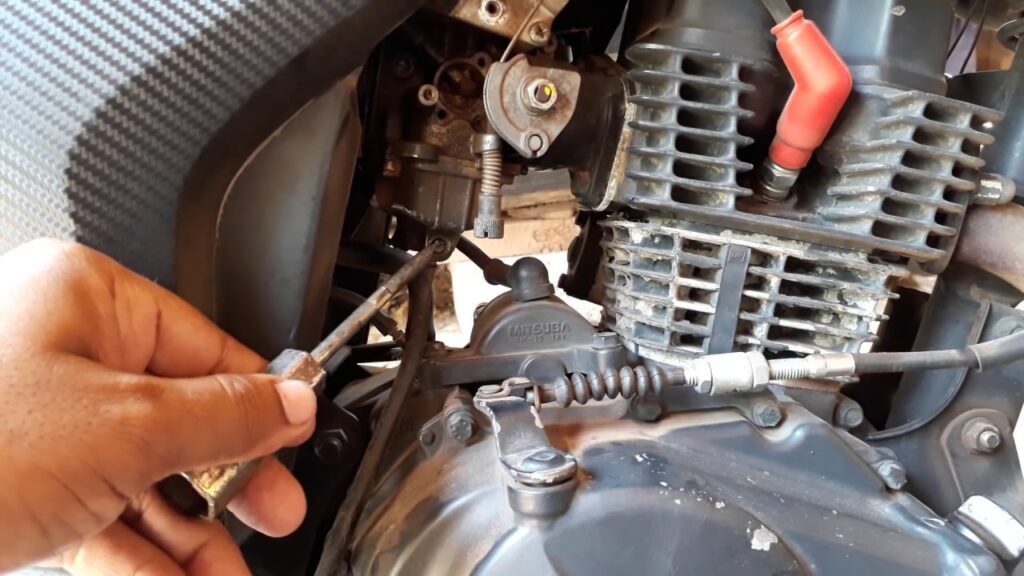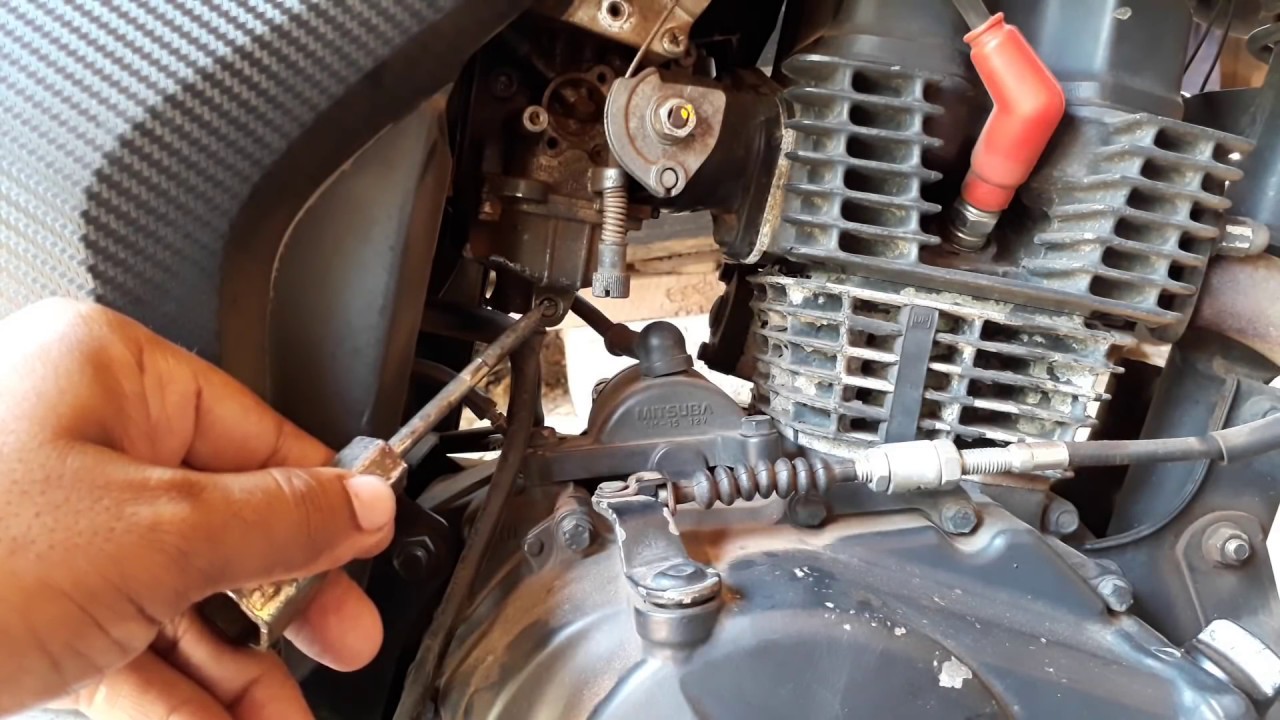
How to Clean Carbs on a Motorcycle: A Comprehensive Guide
Maintaining a motorcycle’s performance often boils down to the details. One of the most crucial maintenance tasks is learning how to clean carbs on a motorcycle. Carburetors, though increasingly replaced by fuel injection systems in modern bikes, remain a staple in many motorcycles, especially older models. A clean carburetor ensures optimal fuel delivery, leading to smoother engine operation, improved fuel efficiency, and overall better riding experience. Neglecting this vital component can lead to a host of issues, including poor idling, stalling, and reduced power. This guide provides a step-by-step approach to effectively cleaning your motorcycle’s carburetor, ensuring your bike runs at its best.
Why Cleaning Your Motorcycle Carbs is Essential
Before diving into the how-to, it’s essential to understand why cleaning your motorcycle carbs is so important. The carburetor’s primary function is to mix air and fuel in the correct ratio for combustion. Over time, contaminants like dirt, varnish from old fuel, and other debris can accumulate inside the carburetor’s intricate passages. This buildup restricts fuel flow, disrupts the air-fuel mixture, and leads to performance problems. Regularly cleaning carbs on a motorcycle prevents these issues and keeps your engine running smoothly.
Think of it like this: your carburetor is like the lungs of your motorcycle. If they’re clogged, your bike can’t breathe properly. Just as a runner needs clear airways to perform optimally, your motorcycle needs a clean carburetor to deliver peak performance. Ignoring this crucial aspect of maintenance can lead to costly repairs down the road.
When Should You Clean Your Motorcycle Carbs?
Determining when to clean your motorcycle carbs depends on several factors, including riding conditions, fuel quality, and the age of your bike. However, there are some telltale signs that indicate it’s time for a cleaning:
- Rough idling: If your motorcycle struggles to maintain a smooth idle, or if it stalls frequently, a dirty carburetor could be the culprit.
- Poor fuel economy: A significant decrease in fuel efficiency can indicate that the carburetor is not metering fuel correctly.
- Hesitation or stumbling: If your motorcycle hesitates or stumbles when accelerating, it could be due to restricted fuel flow in the carburetor.
- Difficulty starting: A dirty carburetor can make it difficult to start your motorcycle, especially in cold weather.
- Visible debris: If you can see visible dirt or varnish in the fuel bowl, it’s definitely time to clean the carbs.
As a general rule, cleaning carbs on a motorcycle should be part of your regular maintenance schedule, ideally once a year or every few thousand miles, depending on your riding habits. If you frequently ride in dusty or dirty environments, you may need to clean them more often.
Tools and Materials Needed to Clean Motorcycle Carbs
Before you start, gather the necessary tools and materials. Having everything on hand will make the process smoother and more efficient:
- Carburetor cleaner: Choose a high-quality carburetor cleaner specifically designed for motorcycle carburetors.
- Screwdrivers: You’ll need a variety of screwdrivers, including flathead and Phillips head, to disassemble the carburetor.
- Wrenches: A set of wrenches will be necessary for removing the carburetor from the motorcycle.
- Pliers: Pliers are useful for gripping and manipulating small parts.
- Compressed air: Compressed air is essential for blowing out debris from the carburetor’s passages.
- Soft brushes: Use soft brushes to scrub away stubborn dirt and varnish.
- Carburetor rebuild kit (optional): If your carburetor is heavily worn or damaged, you may need a rebuild kit.
- Safety glasses: Protect your eyes from carburetor cleaner and debris.
- Gloves: Wear gloves to protect your hands from chemicals and dirt.
- Clean rags: Have plenty of clean rags on hand for wiping up spills and cleaning parts.
- Parts tray: A parts tray will help you keep track of small parts and prevent them from getting lost.
- Service manual: A service manual specific to your motorcycle model will provide valuable information and diagrams.
Step-by-Step Guide: How to Clean Carbs on a Motorcycle
Now that you have the necessary tools and materials, let’s get started. Follow these steps to effectively clean carbs on a motorcycle:
Preparation and Disassembly
- Disconnect the battery: Disconnecting the battery is a crucial safety precaution to prevent any electrical accidents.
- Remove the fuel tank: Carefully remove the fuel tank from the motorcycle. This will provide access to the carburetor.
- Disconnect the throttle cables and fuel lines: Disconnect the throttle cables and fuel lines from the carburetor. Be sure to label the fuel lines to ensure proper reconnection.
- Remove the carburetor: Loosen the clamps holding the carburetor to the intake manifold and carefully remove the carburetor.
- Disassemble the carburetor: Place the carburetor on a clean workbench and begin disassembling it. Refer to your service manual for specific instructions for your motorcycle model. Remove the fuel bowl, jets, needles, and floats.
Cleaning the Carburetor Components
- Soak the parts: Soak all the disassembled parts in carburetor cleaner for the recommended amount of time. This will help loosen dirt and varnish.
- Scrub the parts: Use soft brushes to scrub away any remaining dirt and varnish from the parts. Pay close attention to the jets and needles, as these are particularly susceptible to clogging.
- Clean the carburetor body: Use carburetor cleaner and brushes to clean the carburetor body. Be sure to clean all the passages and orifices.
- Blow out the passages: Use compressed air to blow out all the passages in the carburetor body and parts. This will ensure that they are free of debris.
Reassembly and Installation
- Reassemble the carburetor: Reassemble the carburetor, following the instructions in your service manual. Be sure to install all the parts correctly and tighten all the screws and bolts.
- Install the carburetor: Reinstall the carburetor onto the intake manifold and tighten the clamps.
- Reconnect the throttle cables and fuel lines: Reconnect the throttle cables and fuel lines to the carburetor. Be sure to connect them correctly.
- Reinstall the fuel tank: Reinstall the fuel tank onto the motorcycle.
- Reconnect the battery: Reconnect the battery.
Tips for Preventing Carburetor Problems
Preventing carburetor problems is always better than having to fix them. Here are some tips to help keep your motorcycle carbs clean and functioning properly:
- Use high-quality fuel: Using high-quality fuel can help prevent the buildup of varnish and other deposits in the carburetor.
- Use a fuel stabilizer: If you’re storing your motorcycle for an extended period, use a fuel stabilizer to prevent the fuel from going bad and clogging the carburetor.
- Regularly inspect your fuel filter: A clogged fuel filter can restrict fuel flow to the carburetor, leading to performance problems. Replace your fuel filter regularly.
- Avoid letting your motorcycle sit for extended periods: Letting your motorcycle sit for extended periods can cause the fuel in the carburetor to evaporate, leaving behind deposits that can clog the jets and passages.
- Consider using fuel injection cleaner: Periodically using a fuel injection cleaner (even on carbureted bikes) can help keep the fuel system clean and prevent carburetor problems.
Troubleshooting Common Carburetor Issues After Cleaning
Even after meticulously cleaning carbs on a motorcycle, you might encounter some lingering issues. Here are a few common problems and how to address them:
- Still experiencing rough idling: Double-check the idle mixture screw adjustment. Refer to your service manual for the correct setting.
- Hesitation remains: Ensure the jets are properly sized and clean. Incorrect jetting can cause hesitation during acceleration.
- Fuel leaks: Inspect the fuel bowl gasket and float needle valve for damage. Replace them if necessary.
- Difficulty starting: Verify that the choke is functioning correctly. A malfunctioning choke can make starting difficult, especially in cold weather.
The Importance of Professional Help
While this guide provides a comprehensive overview of how to clean carbs on a motorcycle, some situations may require professional assistance. If you’re not comfortable working on your motorcycle’s carburetor, or if you’ve tried cleaning it yourself and are still experiencing problems, it’s best to take your bike to a qualified mechanic. A professional mechanic has the expertise and tools to diagnose and repair carburetor problems quickly and efficiently. [See also: Motorcycle Repair Costs: What to Expect] They can also perform more advanced carburetor services, such as jetting and tuning.
Conclusion
Cleaning carbs on a motorcycle is a crucial maintenance task that can significantly improve your bike’s performance and reliability. By following the steps outlined in this guide, you can effectively clean your carburetor and keep your motorcycle running smoothly. Remember to take your time, be patient, and always refer to your service manual for specific instructions for your motorcycle model. With a little effort, you can keep your carburetor clean and your motorcycle performing at its best. Regular maintenance, including keeping your carbs clean, will extend the life of your motorcycle and ensure many more enjoyable rides. [See also: Motorcycle Maintenance Checklist] So, grab your tools, gather your supplies, and get ready to give your motorcycle the care it deserves! Learning how to clean carbs on a motorcycle is a valuable skill that will benefit you for years to come.

